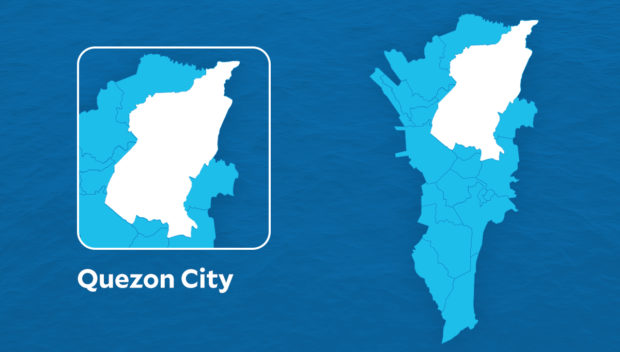
Quezon City map. INQUIRER FILES
MANILA, Philippines — Vehicles were seen as the leading cause of air pollution in Quezon City, its local government found.
According to the results of its Emissions Inventory posted on Thursday, mobile sources or vehicles accounted for 91 percent of criteria air pollutants and 66 percent of climate air pollutants.
“Sa isinagawang Emissions Inventory (EI) ng Quezon City para sa Air Quality Management Project, natukoy na ang mga sasakyan ang pangunahing pinagmumulan ng air pollution sa ating lungsod,” the Quezon City Climate Change and Environmental Sustainability Department said.
(In the Emissions Inventory of Quezon City for the Air Quality Management Project, it has been identified that vehicles were the main source of air pollution in the city.)
READ: BI: Taiwanese wanted for fraud arrested in QC
Meanwhile, for criteria air pollutants, seven percent were point sources, or pollution from industrial sources, while two percent of pollutants were from area sources, or from commercial sources with daily life activities.
For climate air pollutants, 18 percent were point sources and 16 percent of pollutants were from area sources.
The city government added that barangays with more streets, and were densely populated were exposed to higher levels of emissions, and have a greater risk to inhale it.
“Ang mga barangay na may pinakamaraming kalye na dinadaanan ng mga sasakyan at may mataas na populasyon ay may mataas na emissions, at may mas mataas na risk na malanghap ang polusyon,” it added.
(Barangays with busier roads and with dense populations are those with higher emissions, and with a greater risk to inhale it.)
READ: Woman dies after vehicle crashes into QC bank
QC also encouraged its citizens to choose more sustainable transportation such as biking or walking.
“Isinusulong natin ang mga programa upang hikayatin ang mga QCitizens na piliin ang mas sustainable na transportasyon tulad ng pagba-bike o paglalakad lalo na kung malapit lang naman ang pupuntahan,” it added.
(We are pushing for programs to encourage QCItizens to choose more sustainable transportation such as biking or walking especially if their destinations are near.)